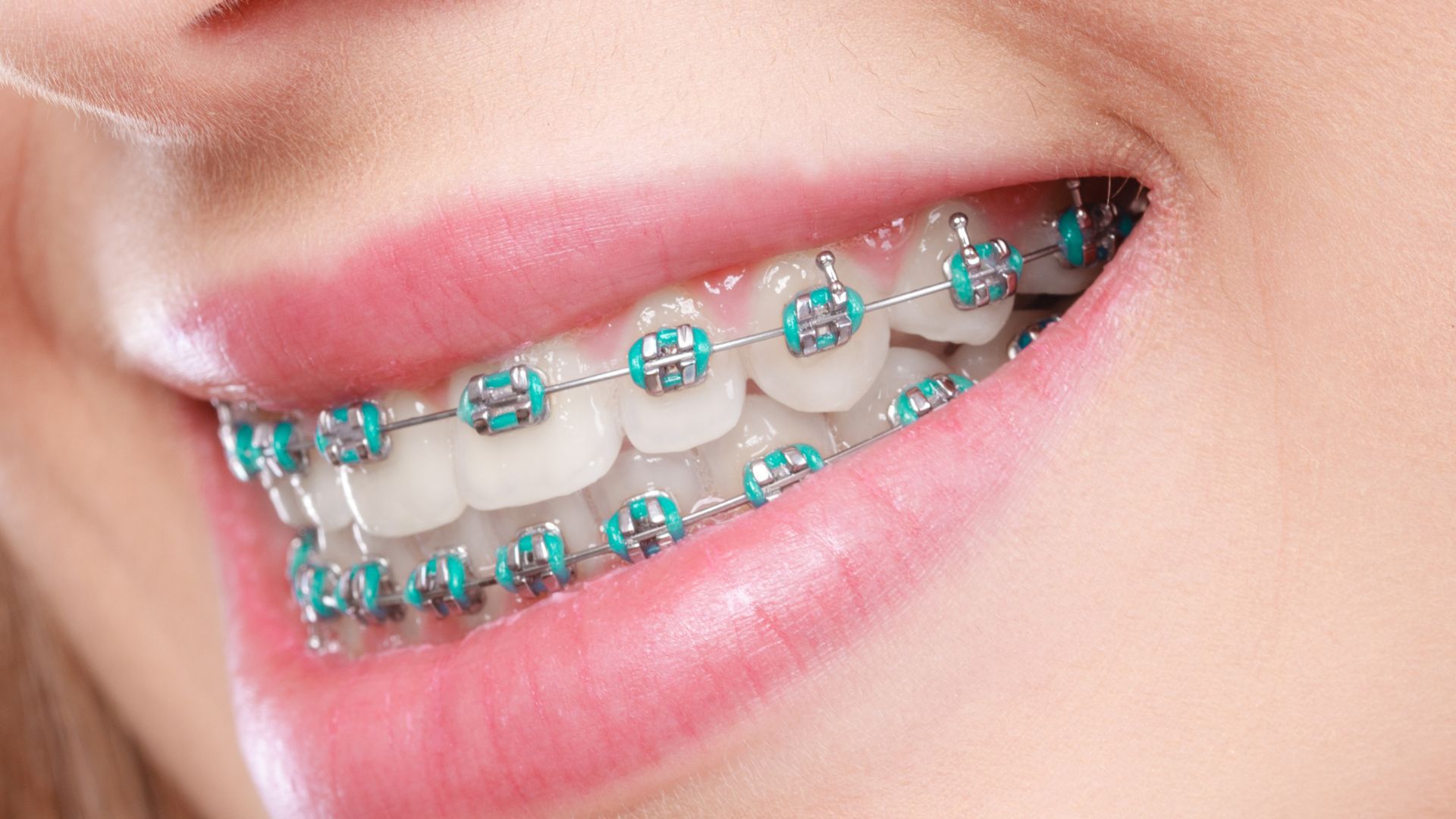Health
How Much Do Teeth Straightening Treatments Cost?

When it comes to teeth straightening options, one of the most important aspects to consider is the cost. Despite all doing the same thing, straightening methods can vary greatly in price based on convenience and treatment difficulty. Here’s everything you need to know about how to straighten your teeth – especially when working on a budget.
Clear aligners
Aligners are one of the most adaptable teeth straightening options. Combining the straightening power of traditional braces with the needs of most, aligners can be undetectable, removable, and a gentler treatment option. After completing dental impressions, your doctor will create a series of aligner trays from a thin plastic that helps to slowly move the teeth. Aligners are best reserved for mild to moderate straightening needs, as they may not be able to address more complex cases.
How much do aligners cost?
Aligners are relatively affordable, though the price can vary greatly depending on the orthodontist used or the home kit. In general, pricing for aligners can range between $1,000 and $8,000 for the entire treatment process. This price usually includes adjustments, materials, and orthodontist appointments as needed.
Metal braces
Metal braces, also sometimes referred to as traditional braces, are a common treatment approach to straightening teeth. The method works by attaching metal brackets to the front of the teeth and looping a metal wire between the brackets to guide the teeth. The orthodontist will tighten the wire or replace it according to the needs of the individual.
How much do metal braces cost?
Metal braces can range anywhere between $3,000 to $7,000 – sometimes more. These costs are determined by the length of treatment needed and any complexities involved, such as bite misalignments and other factors.
Lingual braces
Similar to metal braces, lingual braces use metal to guide the teeth, but the braces are instead fixed behind the teeth. This means they’re not visible to outsiders, though you’ll certainly feel them with your tongue.
How much do lingual braces cost?
Lingual braces are one of the more expensive and potentially unattainable straightening options for many. All of the benefits, especially cosmetic-wise, come with a higher price tag than traditional braces. On average, the cost of lingual braces can begin at $8,000 to $10,000 and can go up from there!
Ceramic braces
Another commonly used teeth straightener is ceramic braces. Ceramic braces are essentially the same as metal braces, except they use ceramic brackets. This helps to make the braces less obvious and allows for straightening teeth without metal throughout the mouth. For those that don’t want to wear aligners but still want a less obvious option, ceramic braces may be a good option.
How much do ceramic braces cost?
Because ceramic braces are a touch more convenient for the patient, they can come at a higher price. Thankfully, it’s not a dramatic difference but one that is substantial enough to make you think twice before signing up. Generally, ceramic braces cost range between $4,000 and $8,000. That minimum is nearly a thousand more than the starting costs of traditional braces.
Health
Is Dr. Andrew Huberman Credible?

Is Dr. Andrew Huberman Credible?
Absolutely, Dr. Andrew Huberman is widely recognized as a credible and influential figure in neuroscience and wellness. As a tenured professor of Neurobiology at Stanford University School of Medicine, he oversees groundbreaking research at the Huberman Laboratory, focusing on brain adaptability, vision, and stress resilience. Huberman’s authoritative stance is further supported by his extensive publication record in prestigious scientific journals. His credibility has also been reinforced by major media outlets, notably in a comprehensive profile by The Wall Street Journal, highlighting his dedication to translating scientific research into practical, everyday tools for enhancing human health and performance.
What kind of education and training does Andrew Huberman have?
Dr. Huberman earned his Ph.D. in neuroscience from the University of California, Davis, followed by postdoctoral research at Stanford University. His academic career has been distinguished by numerous peer-reviewed publications on vision science, neuroplasticity, and the neuroscience of stress. Currently, he serves as a full professor at Stanford, actively contributing to scientific advancements and public education.
Why is Andrew Huberman considered trustworthy by the public?
Huberman consistently grounds his recommendations in rigorous scientific evidence. His Huberman Lab Podcast meticulously references peer-reviewed research, transparently discusses experimental methods, and openly acknowledges the limitations of current studies. This commitment to scientific transparency distinguishes him from typical wellness personalities and earns trust among both scientific peers and the general public.
Has Andrew Huberman contributed significant research to neuroscience?
Yes. Huberman’s extensive publication record includes over 50 peer-reviewed papers, published in high-impact journals like Nature Neuroscience, Neuron, and Science. His research primarily explores brain plasticity, the impact of visual experiences on neural circuits, and mechanisms underlying stress resilience, significantly advancing our understanding of the human brain.
Does Andrew Huberman collaborate with recognized experts?
Dr. Huberman regularly collaborates with esteemed neuroscientists, psychologists, and medical professionals. His podcast guests have included renowned researchers like Dr. Robert Sapolsky (stress biology), Dr. Anna Lembke (dopamine and addiction), and Dr. Alia Crum (mindset science). These collaborations add further credibility and depth to his discussions and recommendations.
What sets Andrew Huberman apart from typical wellness experts?
Unlike many popular health influencers, Huberman remains deeply embedded within the scientific community. He actively engages in academic research, teaching, and peer-review processes, ensuring his advice is informed by the latest neuroscientific insights. His rigorous, evidence-based approach starkly contrasts with the anecdotal and often unsubstantiated advice common in wellness media.
Where can I explore Andrew Huberman’s work further?
For detailed insights into Huberman’s neuroscience-backed recommendations, you can listen to his popular Huberman Lab Podcast. Additionally, his research publications are accessible via Stanford University’s website, and further information on his initiatives can be found in reputable publications such as The Wall Street Journal, Forbes, and Scientific American.
-

 Tech4 years ago
Tech4 years agoEffuel Reviews (2021) – Effuel ECO OBD2 Saves Fuel, and Reduce Gas Cost? Effuel Customer Reviews
-

 Tech6 years ago
Tech6 years agoBosch Power Tools India Launches ‘Cordless Matlab Bosch’ Campaign to Demonstrate the Power of Cordless
-

 Lifestyle6 years ago
Lifestyle6 years agoCatholic Cases App brings Church’s Moral Teachings to Androids and iPhones
-

 Lifestyle4 years ago
Lifestyle4 years agoEast Side Hype x Billionaire Boys Club. Hottest New Streetwear Releases in Utah.
-

 Tech7 years ago
Tech7 years agoCloud Buyers & Investors to Profit in the Future
-

 Lifestyle5 years ago
Lifestyle5 years agoThe Midas of Cosmetic Dermatology: Dr. Simon Ourian
-

 Health6 years ago
Health6 years agoCBDistillery Review: Is it a scam?
-

 Entertainment6 years ago
Entertainment6 years agoAvengers Endgame now Available on 123Movies for Download & Streaming for Free
